Do you want a better understanding of the reports generated by Thrive Quiz Builder? The Reports Suite as we call is the place you’ll find the reports about quiz completion, questions, users, etc.
In this article, we’ll walk you through the Reports Suite in Thrive Quiz Builder so you know how to run through different reports, export, anonymize, or reset them.
- Accessing the Reports Dashboard in Thrive Quiz Builder
- Breaking Down the Quiz Builder Report
- Other Report Options in Thrive Quiz Builder
Accessing the Reports Dashboard in Thrive Quiz Builder
To access the Thrive Quiz Builder reports, start by opening your WordPress admin area, navigating to Thrive Dashboard >> Thrive Quiz Builder, and clicking on Reports in the top right corner.
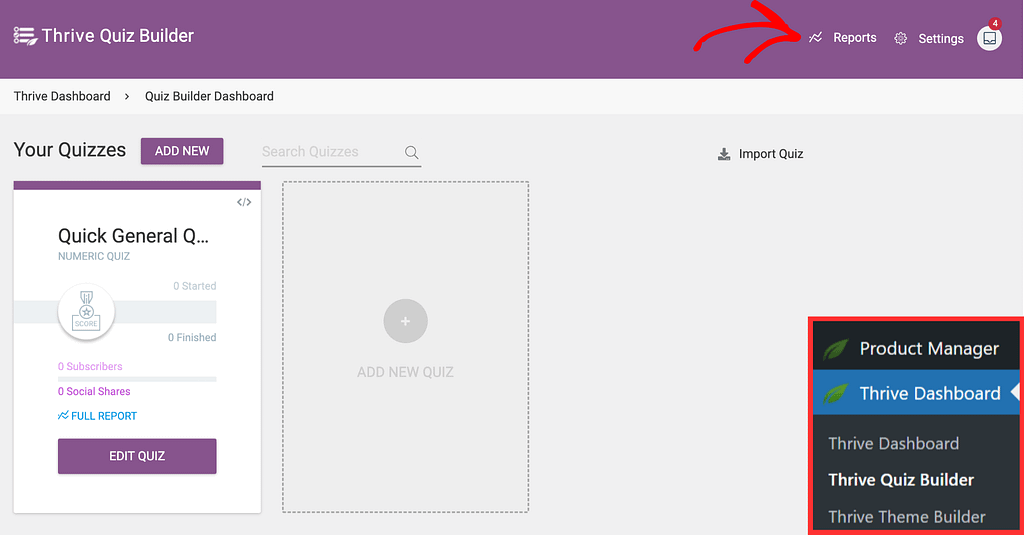
Clicking on Reports will open the Thrive Quiz Builder report page where you can select the report you want to see.
Breaking Down the Quiz Builder Report
The Thrive Quiz Builder Reports dashboard allows you to select different report types you want to see by adjusting the values in the following factors.

The reports and the factors you see depend on the value you select under the Show report dropdown.
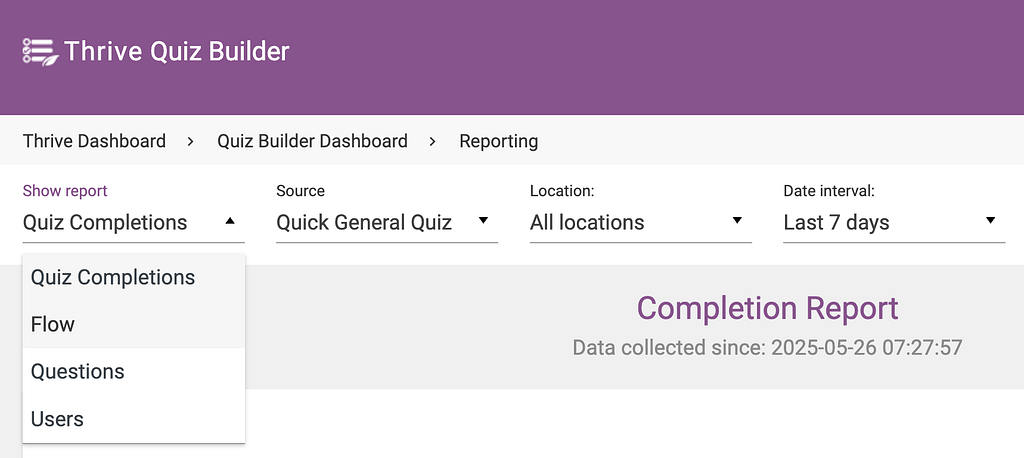
The Thrive Themes Builder lets you view the following Reports.
Quiz Completion Report
This report gives you the total number of quiz completions. A quiz completion is marked when someone has gone through all the questions in the quiz.
To view the Quiz Completion Report, select Quiz Completion under the Show Report field.
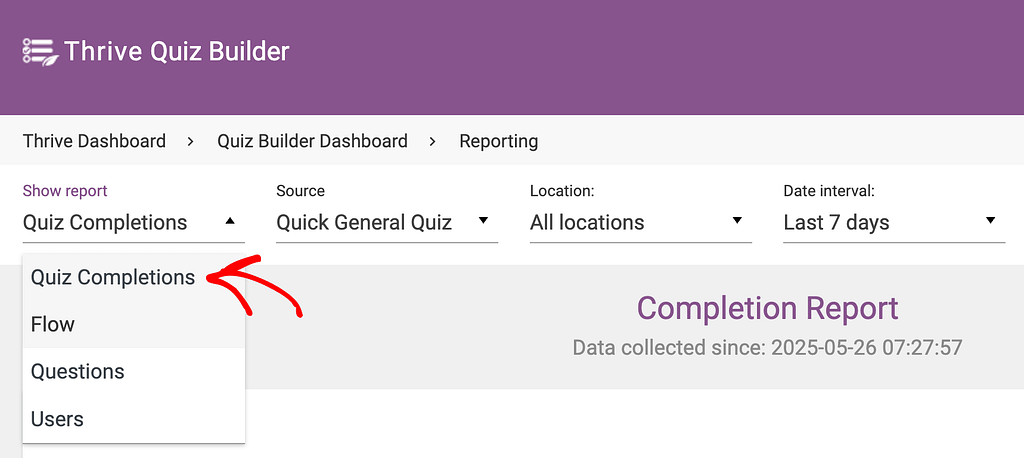
On selecting to view the Quiz Completion report you’ll see other filters where you can select the factors listed below.
- Source: Select the quiz for which you would like to generate the report. You also have the option to view all of them at the same time.
- Location: This section allows you to choose the location of the quiz (where the quiz has been placed – on your pages/posts/lessons).
- Date interval: Select the reporting period. We’ve added some common periods for your convenience, or you can select a Custom date range for specific dates.
- Graph interval: Set the graph interval period here. You can choose between daily, weekly, and monthly.
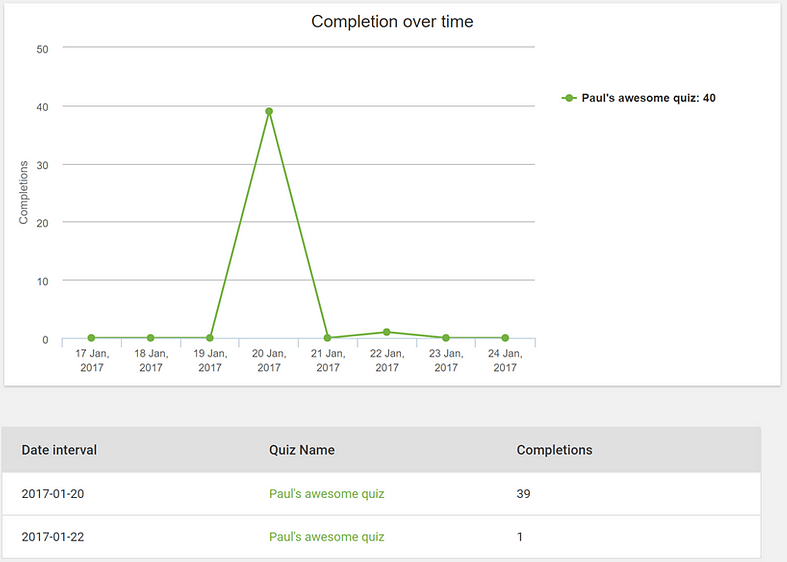
Quiz Flow Report
The Quiz Flow Report shows your quiz of up to four steps in the funnel. This includes the following steps in the order you’ve set them up.
This report is useful when you want to learn the drop off rate for each stage of the quiz.
To view the Quiz Flow Report, select Flow under the Show Report field.
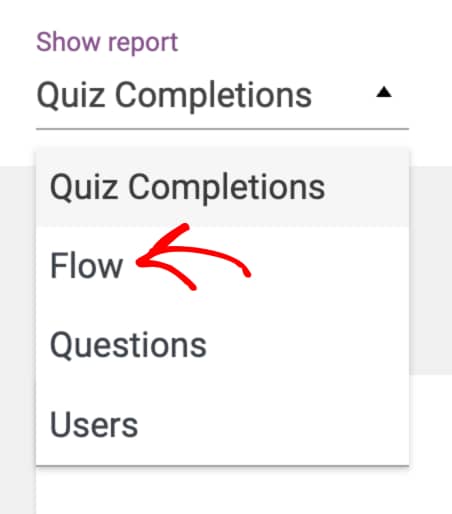
On selecting to view the Quiz Flow report you’ll see other filters where you can select the factors listed below.
- Source: Select the quiz for which you would like to generate the report. You also have the option to view all of them at the same time.
- Location: This section allows you to choose the location of the quiz (where the quiz has been placed – on your pages/posts/lessons).
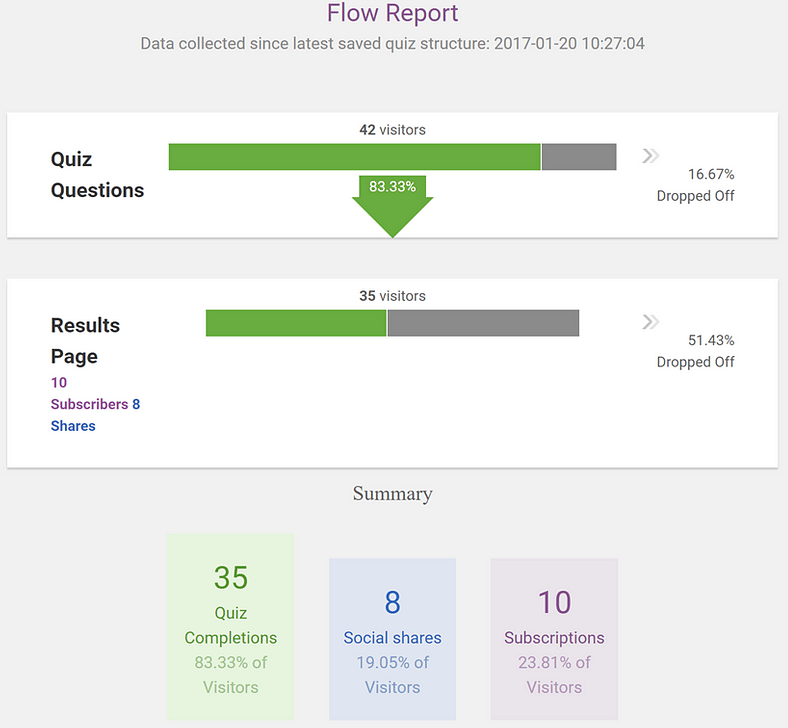
Questions Report
The Questions report gives you a percentage breakdown of the answers that have been selected by your quiz participants. This can be a useful tool for market research to gain an understanding of which choices are the most/least popular.
To view the Quiz Questions Report, select Questions under the Show Report field.
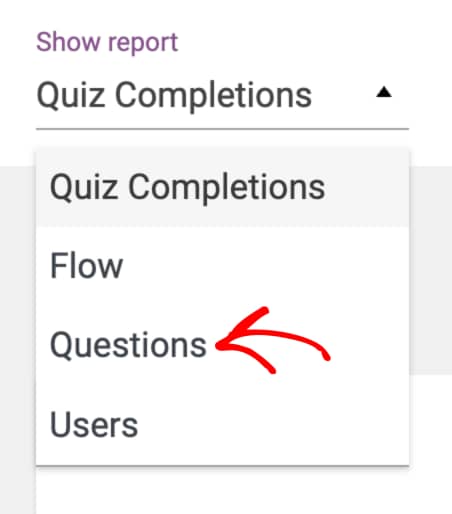
On selecting to view the Questions report you’ll see other filters where you can select the factors listed below.
- Source: Select the quiz for which you would like to generate the report. You also have the option to view all of them at the same time.
- Location: This section allows you to choose the location of the quiz (where the quiz has been placed – on your pages/posts/lessons).
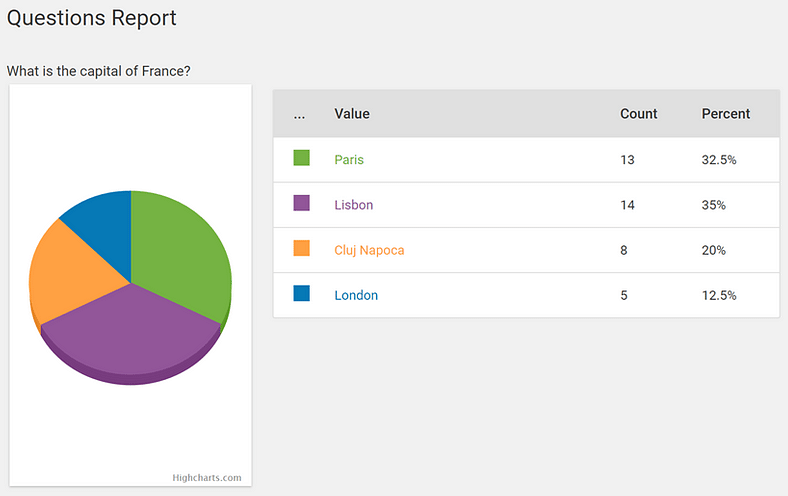
The Users Report
The User’s report gives you a breakdown of each user that’s taken your quiz.
To view the Quiz User’s Report, select Users under the Show Report field.

On selecting to view the Users report you’ll see other filters where you can select the factors listed below.
- Source: Select the quiz for which you would like to generate the report. You also have the option to view all of them at the same time.
- Location: This section allows you to choose the location of the quiz (where the quiz has been placed – on your pages/posts/lessons).
Within the Users report you can see the following information:
- Time and date that the quiz was taken.
- The email address of the quiz participant.
- The score that the visitor achieved.
- The social share badge that was generated (if applicable). You can click on the link to be shown the actual image in a new tab.
- The answers the participant gave.

Clicking View in any of the user rows, you’ll see a new report that shows you the user’s answers to each question.

Other Report Options in Thrive Quiz Builder
Alongside the choice to view a particular report, the Thrive Quiz Report dashboard also lets you export, anonymize and reset reports if needed.
Exporting a Quiz Builder Report
The Thrive Quiz Builder lets you export a report when needed. To do so, open the Reporting page in the Quiz Builder Dashboard and select Questions under the dropdown to Show Report.
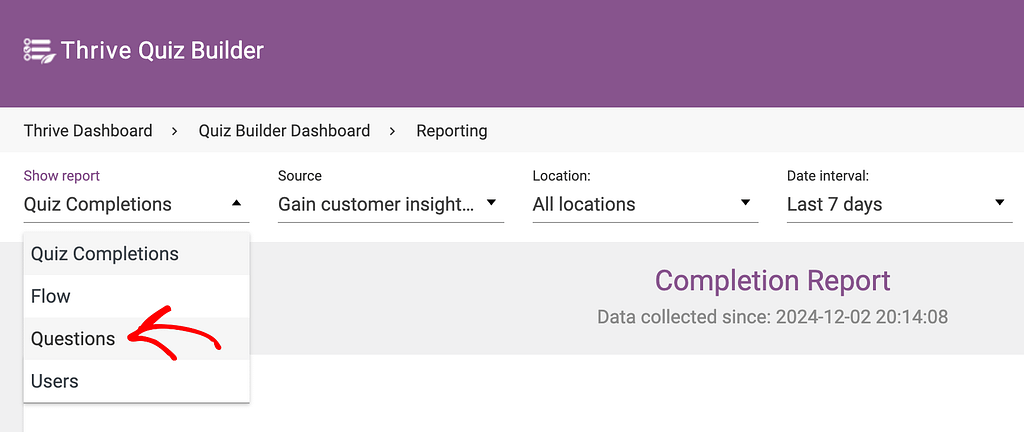
When you select the factor you want to see the report for, you’ll see an option to export report by clicking the Export Report option in the top right.

Anonymizing a Quiz Builder Report
The Thrive Quiz Builder lets you anonymize reports when you don’t want your students’ email ID to be associated with the results.
To do so, open the Reporting page in the Quiz Builder Dashboard and select Users under the dropdown to Show Report.
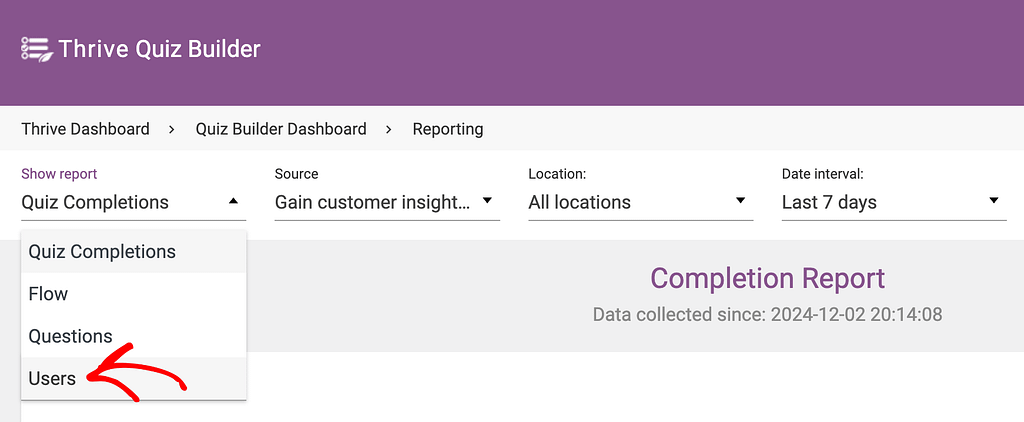
When you select Users click on the Anonymize Results option seen on the top right.

Clicking the Anonymize Results will show a popup where you confirm by clicking Anonymize Results.

Resetting a Quiz Builder Report
The Reset Results option allows you to reset all the conversion data you have collected from one of your quizzes. Basically, it resets all data from a quiz to zero.
This can be very useful if, for example, you gathered data before making your quiz public. Resetting the results will ensure you receive conversion data from your visitors without being interfered by the test data.
To reset results for a quiz, open the report in the particular quiz and click Reset results on the right.

After you have reset the stats, the reporting page of the respective quiz will only display the data that has been collected after the reset.
We’ve just seen the different types of reports you can see in the Thrive Quiz Builder and how you can export, anonymize and reset reports when needed. You can take a virtual tour of this section in the video below.
Next, do you want to send quiz results and answers to the participants? You can refer to this document and learn more.